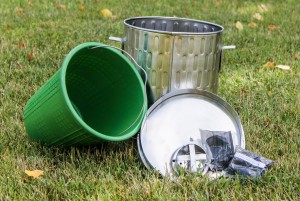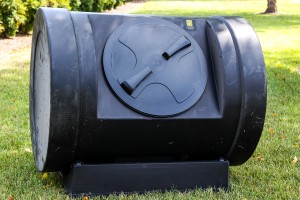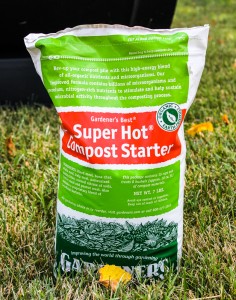Garden How To – Composting
Now that our spring gardens are in full swing and we’re starting to cull the crop of bad produce, what should we do with that organic matter? Before we head off to the trashcan, lets think about Composting the cast offs from the garden!
The Benefits
The benefits of Composting, even on a small scale, are enormous. First, we are creating our own organic matter perfect for soil conditioning next season. A close second is keeping our organic cast offs out of local landfills where they may not biodegrade in our lifetime. A third major benefit of composting is improving water retention in our garden because “heavier” soils hold moisture closer to where our plants need it. An obvious fourth (but not final!) benefit is saving money because purchasing new organic matter to add every year is not necessary, depending on the scale of composting.
Compost can be added to manure stock as well as existing top soil to make your own version of Black Kow planting mix.
Composting Steps/Process
It all starts with keeping an eye out for organic plant based matter. Lettuce scraps from lunch, Coffee Grinds from the French Press, Tomatoes that didn’t quite make the cut and much more are perfect to collect for your composting. Most successful composters keep a small (2 quart) container in the kitchen near the trash to help capture and hold the initial ingredients until they can be added to the compost pile or larger container. Depending on what is captured for compost, this may require dumping after meal time in order to reduce any unwanted smells. Store bought containers may even have activated charcoal/carbon filters to keep the odor to a minimum.
The next major step is “binning”, “piling” or storing the beginning of the compost. There are many ways to accomplish this from man made containers to a simple pile under a dark colored tarp at the edge of the yard. The only major requirements are the ability to get to between 110 and 150 degrees Fahrenheit, moisture content of approximately 50% and the ability to turn or mix the pile easily. What ultimately creates your new soil for next season are small microbes that love hot, moist and well aerated conditions which in turn eat up and degrade the bio-refuse in the compost pile or bin. This process can take a few weeks to a few months depending on the size of the organic matter added and conditions of the pile or bin.
Once temperatures stay below 100 degrees Fahrenheit, regardless of how much the bin is turned and all matter has degraded to the same color and consistency, the compost is ready to be used in the garden.
There are many Home Made or DIY methods for making a compost bin or pile. Many gardeners have success taking old trash cans, adding numerous 1 inch diameter ventilation holes, and dropping their garden refuse in it. Every few weeks, take the can, turn it over, empty it out and shovel the contents back into the can for another few weeks.
Another popular method suitable for LARGE amounts of compost is the Pallet Bin. Take old pallets and screw them together in either a 3 walled (square with a side open) or fully enclosed square configuration. This gives you a bin that is 3 foot by 3 foot by 3 foot approximately. The only downside is turning the pile can be difficult when full.
A product we really like is the ready made plastic container:
These come ready to go on wheeled bases which makes turning the compost inside easy. In addition the container is also jet black, so when place in a sunny spot away from the house, the appropriate 150 degrees Fahrenheit can be reached.
Location of the bin or pile is entirely dependent on your back yard or space. Make sure you have easy access, but avoid having it too close to the home as to avoid unwanted smell or sight. Ensure the compost is in full sun so that the contents get to the appropriate temperature.
Regardless of what bin or pile method you wish to use, adding a “hot start” bag is always a sure fire way to get the microbes working on your garden cast outs.
A Quick List of what to put into your compost:
Grass clippings
Moldy Bread
Bad Fruit/Veggies from the garden
Banana peels
Apple Cores
Shredded news paper (Once a week)
Egg Shells
Shells from Nuts
Tea Leaves
You should avoid any Meats or any animal waste!












